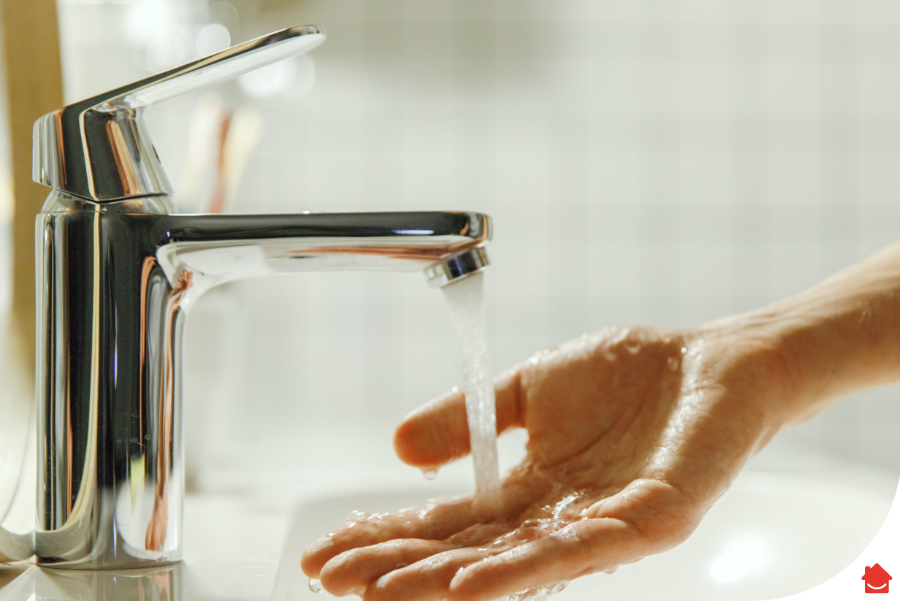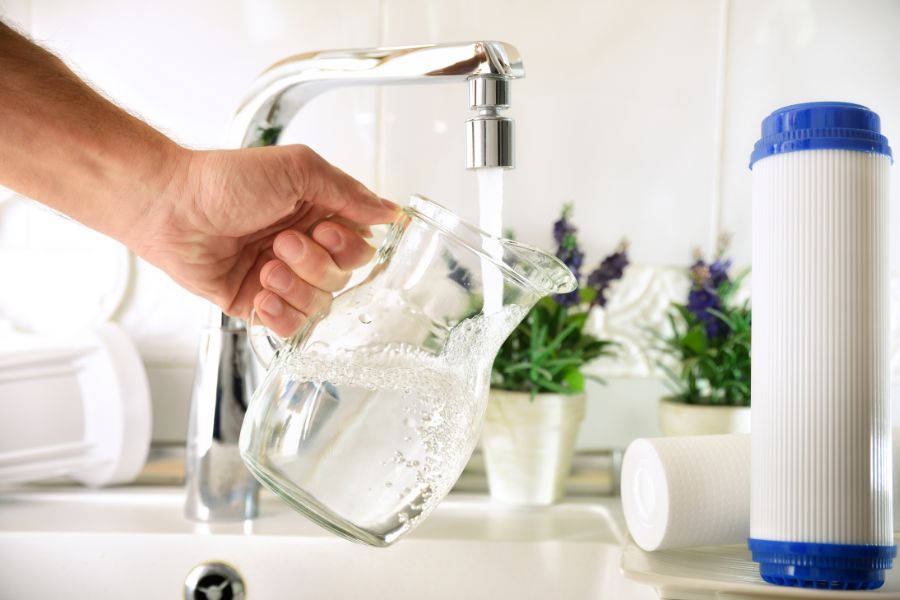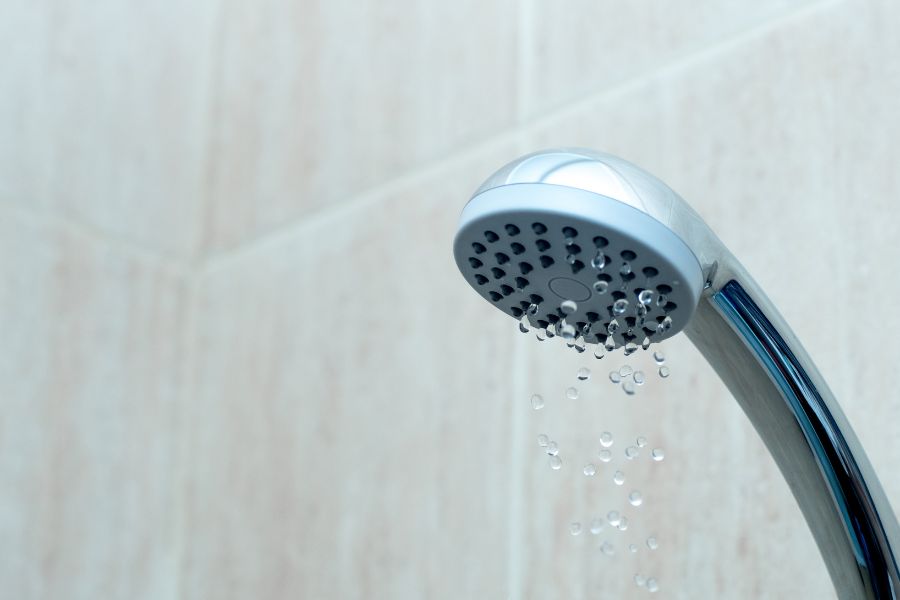Plumbing advice
How to test water pressure
01 Jul 2021 • 8 minutes


Are you feeling disappointed with your morning shower? Perhaps you’re putting up with just a trickle rather than a refreshing blast? Our homes are more likely to suffer from underwhelmingly low water pressure than it being too high.
We’ve put together a guide to help you test your water pressure, address any problems that come with a low reading, and how to adjust if your water pressure is too high. After all, don’t we all want a decent shower in the morning to help kick-start our day?
Water pressure refers to how quickly water flows through the pipes in your home to your taps and shower. This is measured in bars and pounds per square inch (psi), just like the air in your car tyres.
If your domestic water pressure is low, the flow of water from your taps and shower will be slow, and filling a sink or bath will take longer. This is especially true for an upstairs bathroom—water may need to travel upwards against gravity to get to your taps.
If you’re lucky enough to have high water pressure, you’ll find that your sinks and bath will fill quickly, and you should experience a full on power shower every time you switch it on. On the other hand, if your water pressure is too high you risk damaging your home’s plumbing system every time you turn on a tap.
The magic number for household water pressure is around 15 litres of water per minute, although anything between 10 and 15 litres per minute is acceptable.
If your water pressure falls below 10 litres per minute, it’s going to be frustratingly slow to run. You will be able to feel this low water pressure when you shower, fill a bath, or run a tap.
It can be very tricky to measure whether your water pressure is too high. Plumbers will hook up a water pressure gauge to your tap in order to measure the flow. Your home water pressure should not exceed 60psi on this gauge.

Looking to test your water pressure at home? It’s as simple as filling a jug. No, really! Here’s what you need:
Follow this step-by-step guide to measure your own water pressure:
If filling your jug takes longer than 6 seconds, you have a low water flow rate. This is because the sweet spot is 10 litres per minute—if you multiply your 6 seconds by 10 you have 60 seconds. You would be able to fill your jug 10 times in that 60 seconds, therefore you’d have 10 litres per minute.
If you don’t have a 1 litre jug, you can calculate the water flow rate slightly differently. Simply, take the amount of water you can collect in 6 seconds and multiply this by 10. This gives you the amount of water your tap releases in 60 seconds—litres per minute.
For example, if you can fill a 500ml jug in 6 seconds, that would be 0.5 litres x 10 = 5 litres per minute.
Testing for high water pressure is a little different from testing for low. In order to do so, you’ll need a water pressure gauge, and to follow these simple steps:
Performing a water pressure test on your shower follows a very similar principle. Take your measuring jug—provided it has a wide enough rim to catch all of the water—and a timer. Place your jug directly under the shower head and switch on your shower. Use your stopwatch to measure how long it takes to fill the jug. Longer than 6 seconds? That means your shower is running below 10 litres per minute, and therefore at a lower flow rate.
If your daily shower is leaving you feeling a little underwhelmed, we’ve got just the guide to help you fix low water pressure in your shower, and bring a powerful stream to your daily wash.

You may find that your shower’s water flow is adequate, but you’re not quite getting the desired temperature. There are a few things to check if you’ve lost hot water, to include your boiler, water supply, and pipes.
This is an uncommon issue, but an issue nonetheless. High water pressure in your taps and pipes can cause damage to both your pipework and appliances. Symptoms of excessive water pressure include:
If you notice any of these things, it’s best to test your water pressure with a water pressure gauge—these can be picked up at most DIY shops. If your water pressure is too high, you will need to call a plumber.
Low water pressure can be caused by a number of factors. Some of these will be easier to fix than others, and all are great to be aware of when trying to diagnose your water flow issue.
A common cause of low water pressure is high water demand. If multiple people in your area have a shower between 7 and 8am every morning whilst getting ready for work or school, the general water pressure available could be reduced.
Did you know that older properties have much narrower pipes than modern homes? This may be the reason you have low pressure—these pipes weren’t designed for power showers, or multiple appliance usage.
Blocked pipes caused by things such as limescale, dirt or kitchen waste, rust, or ice can be a cause for reduced water pressure. By unblocking your pipes, you may find an instant increase in water flow.
Similarly to pipes, your taps and shower head can get a build-up of limescale, reducing your water pressure. Make sure you thoroughly clean these every few months—this can be done with a natural vinegar and baking soda solution.
The higher your head of water, the greater your water pressure. The head of water is the height between the shower head and the water level in your property’s water tank, usually found in the loft. Showers won’t give good water pressure unless there’s at least one metre between the shower head and the tank.
If your stop tap or shut-off valve is obstructed, your water pressure will be low. Take a look under your kitchen sink and check that it’s fully open—sometimes it’s obstructed by debris, or may have been accidentally closed.
If you’ve carried out a water pressure test resulting in only a dribble, fear not! You’re not cursed with low water pressure forever. There are a few ways to increase the water pressure at home.
The pervasiveness of limescale build-up is real. If you don’t clean your tap outlets and shower head thoroughly every few months, this could be your problem. You’ll need to remove your shower head to give it a good clean, and while you’re there, make sure you check the shower hose isn’t kinked or worn out—this can cause problems too.
Even if it appears limescale-free, it may be worth trying a replacement shower head—especially if this is the only place you notice low water pressure. You would be amazed at how much difference a clean, limescale-free shower head, a new hose, and an unclogged handset can make to your shower pressure.
If you want to put your shower on steroids, get a shower pump fitted to your existing system. The water will get a big boost by the shower pump before it gets to your shower head. If you have an older property with narrower pipes, this could be the answer for you.
Essentially a form of electric pump, a power shower could have you see 3 times as much water pressure. This does, however, require a whole new shower to be fitted, rather than having just a pump integrated into your existing set-up. It all depends on how much you need that power shower wake-up every morning.
If taking your water pressure to the next level isn’t quite enough for you, why not also learn how to save water at home? You’ll be saving money too! Another great way to save on unexpected plumbing issues is with our Plumbing and Drainage cover. Our expert plumbers are available nationwide and are always on hand, ready to save the day.
Our help & advice articles cover Plumbing, Home heating, Electrical, Energy-saving and Home maintenance.